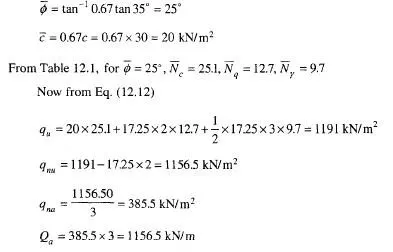The major uses of piles are:
1. To carry vertical compression load.
2. To resist uplift load.
3. To resist horizontal or inclined loads.

Normally vertical piles are used to carry vertical compression loads coming from superstructures such as buildings, bridges etc. The piles are used in groups joined together by pile caps. The loads carried by the piles are transferred to the adjacent soil. If all the loads coming on the tops of piles are transferred to the tips, such piles are called end-bearing or point-bearing piles. However, if all the load is transferred to the soil along the length of the pile such piles are called friction piles. If, in the course of driving a pile into granular soils, the soil around the pile gets compacted, such piles are called compaction piles. Fig. 15.2(a) shows piles used for the foundation of a multistoried building to carry loads from the superstructure.
Piles are also used to resist uplift loads. Piles used for this purpose are called tension piles or uplift piles or anchor piles. Uplift loads are developed due to hydrostatic pressure or overturning movement as shown in Fig. 15.2(a).
Piles are also used to resist horizontal or inclined forces. Batter piles are normally used to resist large horizontal loads. Fig. 15.2(b) shows the use of piles to resist lateral loads.


